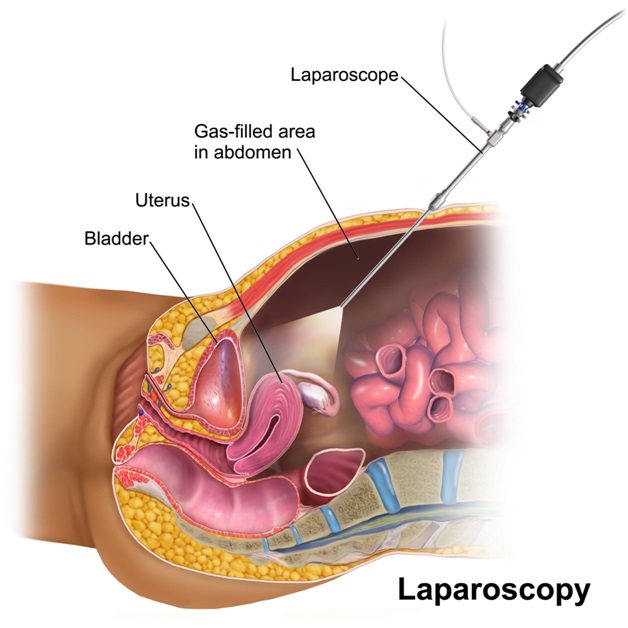Laparoscopy, also known as keyhole surgery, is a diagnostic and surgical procedure which is sued to examine the internal organs of the body through minimum invasion. The procedure involves the use of laparoscope which is inserted into the body using small incisions.
Laparoscope is a long thin tube which has a high resolution camera at its end which is inserted into the body. As it moves inside the body, it sends images which the surgeon can view on a monitor. The doctor is able to view the organs real time without having to completely make large incisions. This procedure allows biopsy samples.
Treatment using Laparoscopy
Many surgical procedures which were earlier performed through major surgeries, are now done laparoscopically. It is used extensively in gynaecological procedures. Some of the laparoscopic procedures include:
- Sterilization (tubal ligation)
- Gynaecologic cancerstaging
- Myomectomy (removal of fibroids)
- Hysterectomy(removal of the uterus with or without the cervix)
- Tubal Reanastomosis
The recovery time of laparoscopy surgery is much faster as there are no large abdominal incisions. Women can resume their normal activities within a few weeks. However, not all surgeries can be performed through laparoscopy. Large tumours or mases and extensive endometriosis may require open surgeries. Though the risk is lower with laparoscopy, they are not totally absent. A qualified surgeon with good experience in advanced laparoscopy can properly evaluate the patient for these procedures.

Watching for Signs of Infection
The doctor will evaluate for signs of infections in the patient post laparoscopy. The patient should contact the doctor if they experience:
- Abdominal pain that becomes more intense over time
- Continuous nauseaor vomiting
- Feversor chills
- Inability to urinate
- Light-headedness
- Persistent cough
- Redness, swelling, bleeding, or drainage at the incision sites
- Shortness of breath
Laparoscopy involves a minor risk of damage to organs during the procedure. If an organ is punctured, it can lead to leakage of blood and other fluids. The surgeon then has to perform a surgery for repairing the damage.
There are other less common risks involved:
- a blood clot, which could also affect pelvis, legs, or lungs
- complications from general anaesthesia
- inflammation of the abdominal wall
Not all cases all suitable for laparoscopy. In some cases, the surgeon may believe that the risk of diagnostic laparoscopy may outweigh its benefits. This may happen where the patient has undergone an abdominal surgery earlier. Therefore, there is an increased risk of adhesions being present between the abdomen walls. It is risky to perform laparoscopy in presence of adhesions as it will be a time consuming procedure and have an increased risk of injuring organs.
It is important to consult a good laparoscopic doctor in Gurgaon who has extensive knowledge of this procedure and can perform it with adequate skills to minimize the risks.
Dr Suman Lal is a leading practitioner of Obstetrics and Gynaecology in Gurgaon with an experience of around 25 years in this field. She is a laparoscopic Specialist in Sector 54 Gurgaon with a Diploma in Advanced Gynaecology Laparoscopic Surgery from Germany. She is one of the most respected doctors and has helped several patients through her treatment and care.